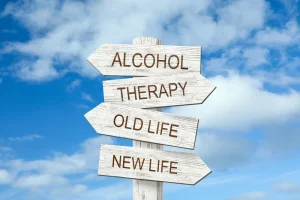Physical Signs and Other Symptoms of Alcoholism & Alcohol Abuse

Alcoholism is a treatable disease, with many treatment programs and approaches available to support alcoholics who have decided to get help. Getting help before your problem drinking progresses to severe alcohol use disorder can save your life. Jaundice can be a physical sign of liver problems, where the skin takes on a yellowish-brown tone due to high levels of bilirubin in the body. While many things could lead to you developing jaundice, a common cause is high levels of alcohol consumption.
What to Expect from Alcohol Addiction Treatment
This is called ‘alcohol flush reaction’ and it happens when your body is unable to fully digest all the alcohol you’ve consumed. This means that the toxins in alcohol, including acetaldehyde, can build up in your body. In the long-term, these vessels can over-dilate, leading to spider veins physical characteristics of alcoholics on the skin. Too much alcohol affects your speech, muscle coordination and vital centers of your brain. A heavy drinking binge may even cause a life-threatening coma or death. This is of particular concern when you’re taking certain medications that also depress the brain’s function.
Patient Care Network
- If you suddenly stop drinking, your body will often experience withdrawal.
- They may become irritable, aggressive, or anxious, even in situations where such behavior is unwarranted.
- Heavy drinking over a period of time can cause a physical dependence on alcohol.
- When a person drinks alcohol, ethanol passes through the digestive system and enters the bloodstream through the linings of the stomach and intestines.
- Because long-term heavy alcohol use can damage almost every organ in the body, a person with an alcohol usedisorder can develop an array ofalcohol-related diseases and disorders that cause many symptoms.
- Because denial is common, you may feel like you don’t have a problem with drinking.
Heavy drinking in conjunction with other behaviors can also signala problem. Because alcoholism rewires the brain and affects a person’s mood, thinking and behaviors, it’s classified as a mental illness.Thus, many of the hallmark signs of alcoholism involve changes in behavior. There are factors that pop up again and again when determining who might have an issue with alcoholism. If you’re in the « at-risk » population, it doesn’t take much to become dependent on alcohol or other drugs. The symptoms of alcohol intoxication range from mild to severe, depending on how much alcohol a person consumes and how quickly their body metabolizes it. Treatment options may include therapy, support groups, medication, and lifestyle changes.
Private outpatient treatment
- As with water retention in the face and body due to the dehydrating effects of alcohol, the feet can also become swollen and discolored due to excessive alcohol abuse.
- It can also affect outward appearance, ranging from minor skin abnormalities to potentially life-threatening conditions.
- They can go from having a casual drink here or there into becoming an alcoholic.
Acne – Alcohol abuse reduces the body’s ability to process vital nutrients and vitamins that the skin needs to remain healthy. Over time, this can lead to impurities in pores and can cause aggressive acne. Twenty-four percent (67.1 million people) binge drank in the past month, meaning that they consumed five or more drinks on at least one occasion. A little over 6 percent (16.6 million people) drank heavily or binge drank on at least five occasions in the last month. Alcoholic drinks are high in calories and have no nutritional benefit to your body.
Alcohol impairs coordination and judgment, increasing the risk of accidents and falls. Individuals struggling with alcoholism may experience frequent injuries due to impaired motor skills and impaired decision-making abilities while under the influence. Additionally, diminished physical performance, such as a decline in strength, endurance, and overall fitness, can also be attributed to the negative impact of alcohol on the body. Alcoholism, also known as alcohol addiction or alcohol use disorder, is a chronic disease characterized by an inability to control or stop drinking despite negative consequences. It goes beyond simply enjoying a drink or two; it involves a compulsive need for alcohol that disrupts an individual’s personal, professional, and social life. Alcoholism can affect anyone regardless of age, gender, or background.

Alcohol and skin conditions
If you’ve had two or three of those symptoms in the past year, that’s a mild alcohol use disorder. As with water retention in the face and body due to the dehydrating effects of alcohol, the feet can also become swollen and discolored due to excessive alcohol abuse. Recurrent swelling https://ecosoberhouse.com/ may suggest an underlying issue with the kidneys, liver, or heart and should be seen by a doctor if continuing for more than two days in a row. Behavioral signs of alcohol addiction include developing a tolerance, failing to fulfill responsibilities and having withdrawal symptoms.
Save 10% on addiction treatment

Severe alcohol consumption can impair the immune system, which can leave a person at greater risk of infections and skin sores (abscesses). As alcohol dries the skin, our natural defence against pathogens, this can also lead to repeated skin infections. If caught early enough, quitting drinking and other lifestyle changes can treat liver disease. As alcohol abuse progresses, the belly can become hard and distended, and fluid buildup called ascites can be a sign of liver damage.

My Loved One Needs Help

When it comes to changes in appearance, alcoholism can have a profound impact on an individual’s physical well-being. These changes in weight can be attributed to the effects of alcohol on the body’s metabolism and nutrient absorption. We publish material that is researched, cited, edited and reviewed by licensed medical professionals. The information we provide is not intended to be a substitute for professional medical advice, diagnosis or treatment. It should not be used in place of the advice of your physician or other qualified healthcare providers. Alcoholism is a serious and potentially life-threatening condition that affects millions of people worldwide.
Health Complications
The test is free, confidential, and no personal information is needed to receive the result. Alcohol misuse and addiction can have harrowing and hazardous side effects at every phase. Effective, evidence-based treatment can help and recovery is possible. A health care provider might ask the following questions to assess a person’s symptoms.
Early Symptoms
Since alcohol is consumed by more than 80 percent of all adults, it is difficult to see where recreational consumption ends and addiction begins. While there are plenty of signs, the physical signs of alcoholism can be the most obvious. Alcoholism is a term that is sometimes used to describe what is known as an alcohol use disorder (AUD). Alcohol use disorder is a pattern of alcohol use that involves problems controlling your drinking, being preoccupied with alcohol or continuing to use alcohol even when it causes problems.
